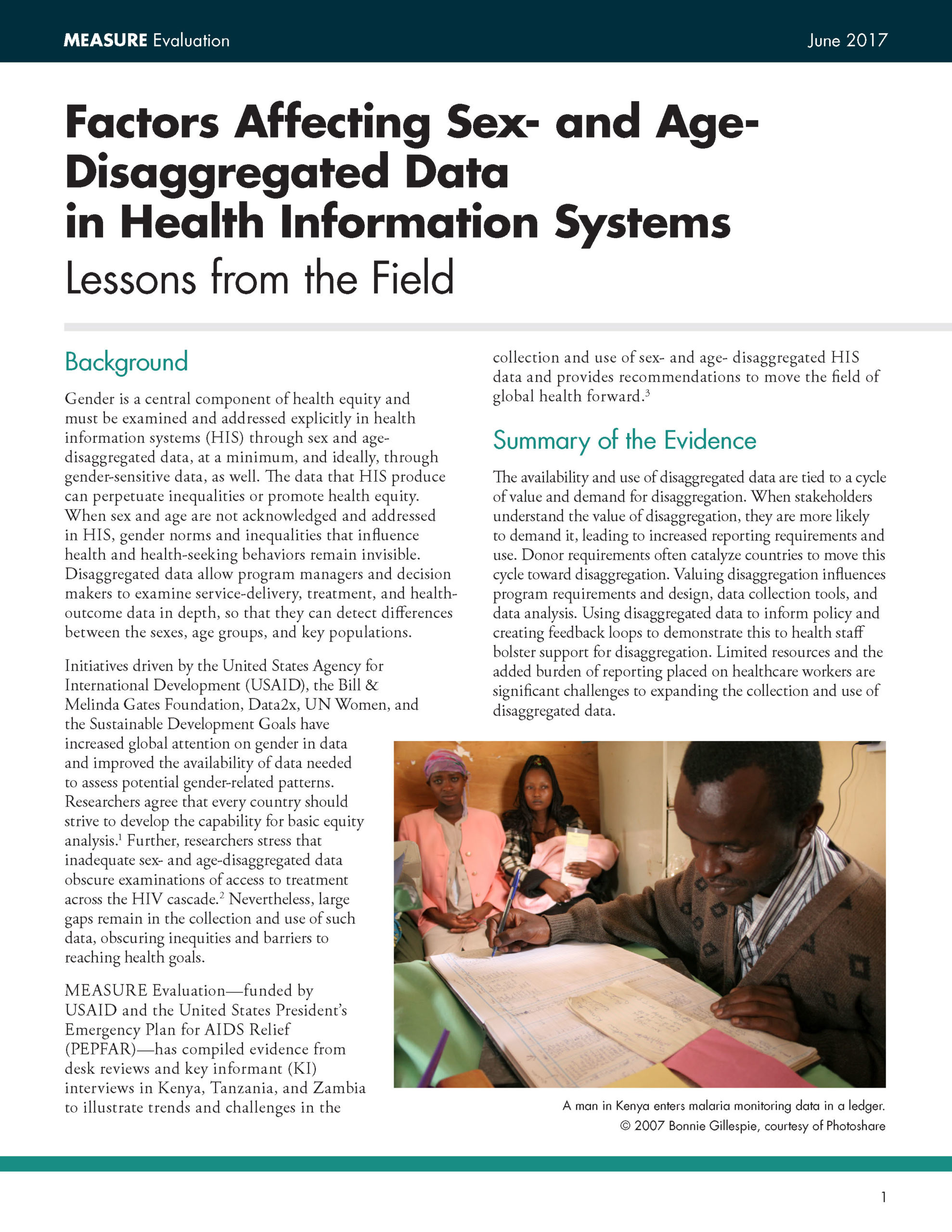Factors Affecting Sex- and Age-Disaggregated Data in Health Information System: Lessons from the Field

Abstract: Gender is a central component of health equity and must be examined and addressed explicitly in health information systems (HIS) through sex and age-disaggregated data, at a minimum, and ideally, through gender-sensitive data, as well. The data that HIS produce can perpetuate inequalities or promote health equity. When sex and age are not acknowledged and addressed in HIS, gender norms and inequalities that influence health and health-seeking behaviors remain invisible. Disaggregated data allow program managers and decision makers to examine service-delivery, treatment, and health-outcome data in depth, so that they can detect differences between the sexes, age groups, and key populations.
MEASURE Evaluationfunded by USAID and the United States Presidents Emergency Plan for AIDS Relief (PEPFAR)has compiled evidence from desk reviews and key informant (KI) interviews in Kenya, Tanzania, and Zambia to illustrate trends and challenges in the collection and use of sex- and age- disaggregated HIS data and provides recommendations to move the field of global health forward.
MEASURE Evaluationfunded by USAID and the United States Presidents Emergency Plan for AIDS Relief (PEPFAR)has compiled evidence from desk reviews and key informant (KI) interviews in Kenya, Tanzania, and Zambia to illustrate trends and challenges in the collection and use of sex- and age- disaggregated HIS data and provides recommendations to move the field of global health forward.
Shortname: fs-17-215
Author(s): MEASURE Evaluation
Year: 2017
Language: English
Region(s): Africa, KENYA, TANZANIA, ZAMBIA
Resource Type: Guidance and Tools
Source: MEASURE Evaluation
Filed under: Age-Disaggregated Data, Brief, Data, Gender, Health Information Systems, Kenya, Sex-Disaggregated Data, Tanzania, Zambia
